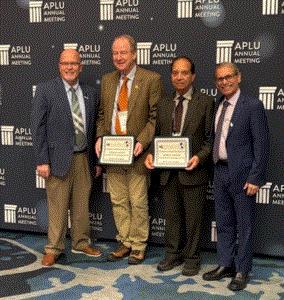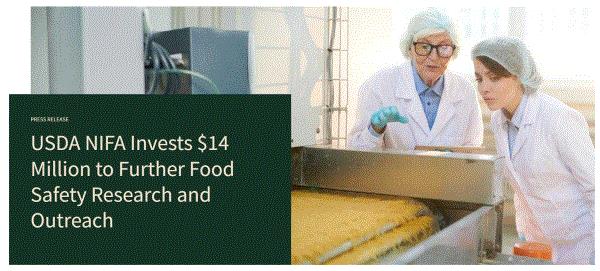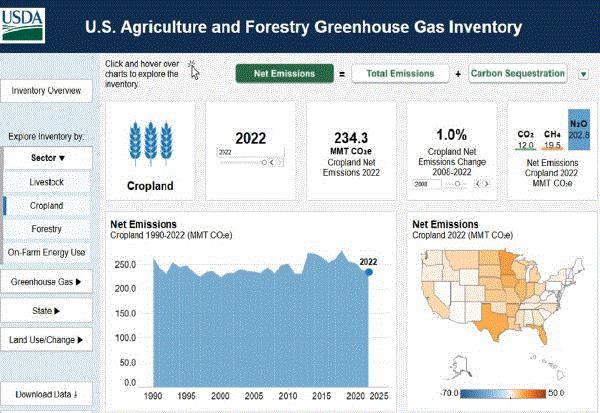Last Chance to Be a Finalist!
ICYMI, Inside Grower and Indoor Ag-Con have teamed up to offer a brand new slate of awards called the CEAs, or Cultivating Excellence Awards. Our deadline for nomination forms is this Friday, December 13, so if you’d like to be considered, finalize your nomination form this week.
What are the CEAs, you ask? There are three awards, two are grower-focused and one is a product-focused award for vendors and allied trade:
• Operational Excellence Award
• Good Stewardship Award
• Product Innovation Award
A quick note, we’ve received several nominations in the Operational Excellence category, but not as many in Good Stewardship. If you are focused on sustainability or have a great program giving back to your community, consider filling out the Good Stewardship nomination form!
Don’t miss your chance to be recognized for all the hard work your operation puts in on the daily. Three finalists will be selected for each grower award, and the finalists will receive one All-Access pass for their organization to Indoor Ag-Con.
We will recognize all the finalists and announce our winners during the luncheon awards gala on the first day of Indoor Ag-Con, which runs March 11-12, 2025 at the Westgate Las Vegas.
Learn more at the
CEAs website and fill out your nomination form (or finish the one you started!) by
Friday, December 13 to be considered.
Special thanks go out, too, to our Official Sponsor:

NCERA-101 Receives Multistate Research Award
Members of the NCERA-101 Committee on Controlled Environment Technology and Use were recently awarded the 2024 Excellence in Multistate Research Award by the USDA National Institute of Food and Agriculture (NIFA) for their 40+ years work in advancing the field of CEA.
A conglomerate of academics and researchers representing a breadth of different disciplines, the committee coordinates CEA-based research that can be disseminated to farmers, producers and K-12 students as they help transform the next generation of CEA scientists. With this award, the committee will also receive $15,000 from the Hatch Multistate Research Fund, helping to further support research and outreach objectives.

Present to receive the award at the Association of Public Land-Grant Universities meeting in Orlando, Florida, were: (left to right) Dr. George Smith, Michigan State University; Dr. A.J. Both, Rutgers University; Dr. Ramesh Kanwar, Iowa State University; and Dr. Manjit Misra, USDA NIFA.
For more about NCERA-101, the Multistate Research Award, or the work being done, the full story can be found in the USDA NIFA
press release.

$14 Million Investment from USDA NIFA in Food Safety Research and Outreach
Late in November, the USDA NIFA announced they would be contributing $14 million in projects related to “food safety research, outreach and workforce training” as part of a larger effort to “strengthen the safety of our nation’s food supply.”

Within that funding, $4.5 million will be contributed under the Food Safety and Defense Program with the mandate of reducing food contamination risks by developing methods and procedures to identify, enumerate and/or mitigate hazards in foods. Of the 12 projects funded under the Food Safety and Defense Program, Emory University in Georgia will receive around $800,000 to develop improved laboratory tests for detecting if viruses in produce like lettuce and raspberries are infectious.
The additional $9.6 million in funding will be under the NIFA Food Safety Outreach Program (FSOP), which is tasked with providing food safety training and education to small to mid-size farms and processers, veterans, beginning and underserved farmers, and small-scale merchant wholesalers. Within the 23 funded FSOP projects, the one I’m most excited about is the University of Florida-led initiative to develop a multistate collaborative effort to support the Food Safety Modernization Act in the Southeast produce industry with compliance training, education and outreach.
For more information about the projects funded and how they might affect you, visit the full NIFA press release here.

New Tool from USDA for Greenhouse Gas Data
For any climate-related researchers, farmers interested in better understanding their operations, or anyone who simply enjoys science-related infographics, the USDA has a new toy for you. Announced last week, they launched the Agriculture and Forestry Greenhouse Gas Inventory Data Viewer, an interactive tool illustrating the long-term trends in greenhouse gas levels within the agriculture and forestry sectors.
Containing data from the EPA annual Inventory of U.S. Greenhouse Gas Emissions and Sinks going back to 1900, users can explore the data by state, emission source and even emission type. The data viewer and its associated repository will be updated annually, and I highly encourage you all to dive in and see what you can find to help improve your own emissions!

Progress on Pythium

Contributed by Jen Polanz
My last item from the Global Produce & Floral Show in Atlanta comes from my visit to the Sakata Seed America booth, where I talked with CEA Lead Tracy Lee Zogby about the company’s progress on combatting Pythium in spinach for hydroponic production. What they’ve found after working with growers in real-life environments is that the problem is not always Pythium … or at least it’s not Pythium first.
What they found is that other root pathogens, like Fusarium, can create an ideal environment for Pythium to come in and do its dirty work, which takes down spinach crops faster than you can say, well, Fusarium. Once they determined that, they began to look for and test Fusarium-resistant varieties in hydroponic production to see if they can last longer. So far that resistance seems to help the plants hold off long enough to stay healthy through the growing and harvesting process.




Stay curious, ask questions and let me know how it goes at scampbell@ballpublishing.com.

Dr. Sean Campbell
Editor-at-Large
Inside Grower
This email received by 33,777 loyal readers!
Interested in advertising in Inside Grower? Contact Paul Black or Kim Brown and they'll show you how easy, effective and affordable it is.